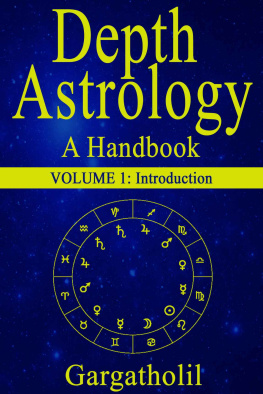Claire Comstock-Gay - Madame Clairevoyants Guide to the Stars: Astrology, Our Icons, and Our Selves
Here you can read online Claire Comstock-Gay - Madame Clairevoyants Guide to the Stars: Astrology, Our Icons, and Our Selves full text of the book (entire story) in english for free. Download pdf and epub, get meaning, cover and reviews about this ebook. year: 2020, publisher: HarperCollins, genre: Romance novel. Description of the work, (preface) as well as reviews are available. Best literature library LitArk.com created for fans of good reading and offers a wide selection of genres:
Romance novel
Science fiction
Adventure
Detective
Science
History
Home and family
Prose
Art
Politics
Computer
Non-fiction
Religion
Business
Children
Humor
Choose a favorite category and find really read worthwhile books. Enjoy immersion in the world of imagination, feel the emotions of the characters or learn something new for yourself, make an fascinating discovery.
- Book:Madame Clairevoyants Guide to the Stars: Astrology, Our Icons, and Our Selves
- Author:
- Publisher:HarperCollins
- Genre:
- Year:2020
- Rating:3 / 5
- Favourites:Add to favourites
- Your mark:
Madame Clairevoyants Guide to the Stars: Astrology, Our Icons, and Our Selves: summary, description and annotation
We offer to read an annotation, description, summary or preface (depends on what the author of the book "Madame Clairevoyants Guide to the Stars: Astrology, Our Icons, and Our Selves" wrote himself). If you haven't found the necessary information about the book — write in the comments, we will try to find it.
A fresh, profound, and fun way to look at all things astro while also making spot-on observations about your pop culture faves. Cosmopolitan
A soulful exploration of the twelve astrological signs embodied by our living starsfrom divas to philosophers, poets to punksand the ways they can help us better understand ourselves and each other, from the wildly popular astrology columnist for New York magazines The Cut.
Whether you believe in it or not, astrologys job has never been to give us a preordained vision of the future, nor to sort us into twelve neat personality types, but to provide the tools and language for delving into our weirdest, best, most thorny contradictions, and for understanding ourselves and each other in our full complexity. The stars and the planets then are more like mirrors that show us who we are, that give us an understanding of how to be and how to move through the world; how certain people do it differently, and what we can learn by studying them.
In Madame Clairevoyants Guide to the Stars, Claire Comstock-Gay brings the sky down to Earth and points to our popular starsfrom Aretha Franklin to Mr. Rogers, from poets in Cancer to punk singers in Scorpioto reveal what the sky has to teach us about being human. In this wise, lyrically written guide, she examines the twelve astrological signs, illuminating the ways each one is more complicated, beautiful, and surprising than you might have been told. Claire suggests that actually its okay, and even important, to be a seeker, to hunger for self-knowledge, and if astrology is the vehicle for that inquiry, so be it.
Madame Clairevoyants Guide to the Stars offers a clear introduction to the basics and an innovative new framework for creatively using astrology to illuminate our lives on earth. Its a road map to our internal world, yes, but Claire also reminds us that its still our job to navigate it. Combining both heavenly insights and the earthly wisdom of writers like Cheryl Strayed and Heather Havrilesky and the poetry of Patricia Lockwood and Mary Oliver, Madame Clairevoyants Guide to the Stars offers a fresh, profound, and fun way to look at ourselves and others, and perhaps see each more clearly. And in that way, this book is not just beautiful, but transformative.
Claire Comstock-Gay: author's other books
Who wrote Madame Clairevoyants Guide to the Stars: Astrology, Our Icons, and Our Selves? Find out the surname, the name of the author of the book and a list of all author's works by series.









